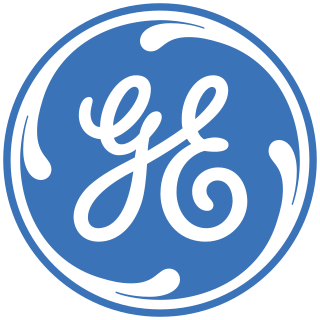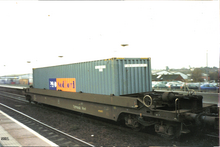
Containerization is a system of intermodal freight transport using intermodal containers. Containerization, also referred as container stuffing or container loading, is the process of unitization of cargoes in exports. Containerization is the predominant form of unitization of export cargoes, as opposed to other systems such as the barge system or palletization. The containers have standardized dimensions. They can be loaded and unloaded, stacked, transported efficiently over long distances, and transferred from one mode of transport to another—container ships, rail transport flatcars, and semi-trailer trucks—without being opened. The handling system is mechanized so that all handling is done with cranes and special forklift trucks. All containers are numbered and tracked using computerized systems.

An intermodal container, often called a shipping container, or a freight container, (or simply ”container”) is a large standardized container designed and built for intermodal freight transport, meaning these containers can be used across different modes of transport – such as from ships to trains to trucks – without unloading and reloading their cargo. Intermodal containers are primarily used to store and transport materials and products efficiently and securely in the global containerized intermodal freight transport system, but smaller numbers are in regional use as well. It is like a boxcar that does not have wheels. Based on size alone, up to 95% of intermodal containers comply with ISO standards, and can officially be called ISO containers. These containers are known by many names: cargo container, sea container, ocean container, container van or sea van, sea can or C can, or MILVAN, or SEAVAN. The term CONEX (Box) is a technically incorrect carry-over usage of the name of an important predecessor of the ISO containers: the much smaller steel CONEX boxes used by the U.S. Army.

Intermodal freight transport involves the transportation of freight in an intermodal container or vehicle, using multiple modes of transportation, without any handling of the freight itself when changing modes. The method reduces cargo handling, and so improves security, reduces damage and loss, and allows freight to be transported faster. Reduced costs over road trucking is the key benefit for inter-continental use. This may be offset by reduced timings for road transport over shorter distances.

Freightliner Group is a rail freight and logistics company headquartered in the United Kingdom. It is presently a majority owned subsidiary of the American holding company Genesee & Wyoming.

Penske Truck Leasing Co., L.P. is a joint venture of Penske Corporation, Penske Automotive Group, and Mitsui & Co. Headquartered in Reading, Pennsylvania, the company was founded by Team Penske owner Roger Penske on December 1, 1969. It is Penske’s flagship and best known division. The firm serves customers in North America, South America, Europe, Asia, and Australia; among its services are full-service commercial truck leasing, truck fleet maintenance, truck rentals, and used truck sales. The company currently employs more than 40,000 workers worldwide and operates and maintains a fleet of more than 450,000 vehicles. Brian Hard is the president and CEO of the company.

COSCO Shipping Development Co., Ltd., stylized as COSCO SHIPPING Development is a financial services company based in Shanghai, China.
Sea Containers was a Bermudan registered company which operated two primary business areas: transport and container leasing.

GE Capital Rail Services, also known as GE Railcar, or GE Railcar Services Corporation was a business unit of GE Capital, a division of General Electric. It was a distinct business unit from General Electric's railway locomotive manufacturer.

Swift Transportation is a Phoenix, Arizona-based American truckload motor shipping carrier, part of Knight-Swift. With over 23,000 trucks, it is the largest common carrier in the United States. In 2017, Swift merged with Knight Transportation, also of Phoenix.
The Greenbrier Companies is an American publicly traded transportation manufacturing corporation based in Lake Oswego, Oregon, United States. Greenbrier specializes in transportation services, notably freight railcar manufacturing, railcar refurbishment and railcar leasing/management services. The company is one of the leading designers, manufacturers and marketers of rail freight equipment in North America and Europe. It also has operations in South America, Poland, Romania and Turkey. Greenbrier is a leading provider of railcars, wheelsets, parts, management, leasing and other services to the railroad and related transportation industries in North America. As of August 31, 2021, Greenbrier employs 15,400 people across its global operations. Formed in 1981 and publicly traded since 1994, the company generates revenues of US$3.49 billion.

A well car, also known as a double-stack car, is a type of railroad car specially designed to carry intermodal containers used in intermodal freight transport. The "well" is a depressed section that sits close to the rails between the wheel trucks of the car, allowing a container to be carried lower than on a traditional flatcar. This makes it possible to carry a stack of two containers per unit on railway lines wherever the structure gauge assures sufficient clearance. The top container is secured to the bottom container either by a bulkhead built into the car — possible when bottom and top containers are the same dimensions, or through the use of inter-box connectors (IBC). Four IBCs are needed per well car. In the terminal there are four steps: unlock and lift off the top containers of an inbound train, remove the bottom containers, insert outbound bottom containers, lock assembly after top containers emplaced. Generally this is done car-by-car unless multiple crane apparatus are employed.

Husa Transportation Group is a group of railfreight, logistics and rail services companies founded in 1998, the group's main business arm on foundation was ACTS Nederland BV (ACTS), founded 1989, an open access freight operator in the Netherlands.

ERS Railways is a rail freight company presently owned by the Swiss rail freight company Hupac.
Macquarie European Rail is a rolling stock company (ROSCO). It is presently owned by the French railway leasing entity Akiem.
SNCF Logistics was the division of the SNCF group responsible for freight transportation and logistics.
GE Capital Rail Services was a European railway services company owned by GE Capital and headquartered in Amsterdam, Netherlands. The company was formed in 1998 through the acquisition and merger of the leasing firms Cargowaggon and Tiphook.
AS Operail is a railway logistics company located in Tallinn, Estonia. Its sole shareholder is the Government of Estonia.

A container chassis, also called intermodal chassis or skeletal trailer, is a type of semi-trailer designed to securely carry an intermodal container. Chassis are used by truckers to deliver containers between ports, railyards, container depots, and shipper facilities, and are thus a key part of the intermodal supply chain.
A pocket wagon is a freight wagon that has been specially designed for the transport of truck semi-trailers. This wagon belongs to the group of flat wagons in special design with bogies and is used in combined transport (CT). The name of these freight wagons comes from the fact that between the narrow longitudinal girders on the outside and also lengthways between the bogies, the so-called pockets are located, in which the wheels of the semi-trailers are particularly low. For flexible use in CT, pocket wagons have hinged latches with ISO spigots on the solebar, so that containers and swap bodies up to 45 ft can be accommodated. As a flat wagon, it bears the UIC generic letter S and, since it is intended for the transport of road vehicles on one level, the code letter d. Since it is also possible to transport containers in a pocket wagon, it bears the UIC generic mark Sdgs. In this context, the code letter g stands for "containers up to 60 feet" and the lower case s for the permitted speed of up to 100 km/h (62 mph). The wagons have a yellow triangle with a black P on the long side. The first pocket wagons were built in Germany as early as 1972 and further developed according to requirements.












